Moniek Bloks's Blog, page 18
April 12, 2025
Book News Week 16
Book News week 16 – 14 April – 20 April 2025

The Rebel Romanov: Julie of Saxe-Coburg, the Empress Russia Never Had
Hardcover – 15 April 2025 (US)
The post Book News Week 16 appeared first on History of Royal Women.
April 11, 2025
Queen Alexandra’s coronation dress goes on display
Queen Alexandra’s coronation dress is going on display for the first time in 30 years.
The coronation dress will go on display today with more than 300 other items at The King’s Gallery at Buckingham Palace as part of the new exhibition The Edwardians: Age of Elegance.
The exhibition focuses on two royal couples – King Edward VII and Queen Alexandra, and King George V and Queen Mary – at a time of profound change.
The golden coronation dress broke with tradition, as a coronation dress would usually be a plain white or cream gown. Queen Alexandra chose this dress from the Parisian fashion Morin Blossier. The dress is sewn with thousands of small gold spangles. It was the first royal outfit to include the national emblems of Britain, and this new tradition has continued on subsequent coronation dresses.
Click to view slideshow.The dress is very fragile, and conservators have spent more than 100 hours preparing it for display.
Exhibition curator Kathryn Jones said, “While it has darkened over time, Alexandra’s choice of a shimmering gold fabric would have been incredibly striking at the coronation; there are descriptions in contemporary newspapers of moments in the ceremony where the Queen appears in an extraordinary blaze of golden light, the dress glowing in the new electric lighting. It’s a powerful example of Edward and Alexandra’s attempts to balance tradition and modernity as they stood on the cusp of the 20th century: a shining moment of glamour before the world was at war.”
Queen Alexandra’s coronation jewels, the Dagmar necklace and earrings, which were a wedding gift, are also on display. Also on display is the well-known Kokoshnik Tiara.
The post Queen Alexandra’s coronation dress goes on display appeared first on History of Royal Women.
April 10, 2025
The Pearl Poiré Tiara
The Pearl Poiré tiara belongs to the Danish royal family and made its way from Prussia and the Netherlands.
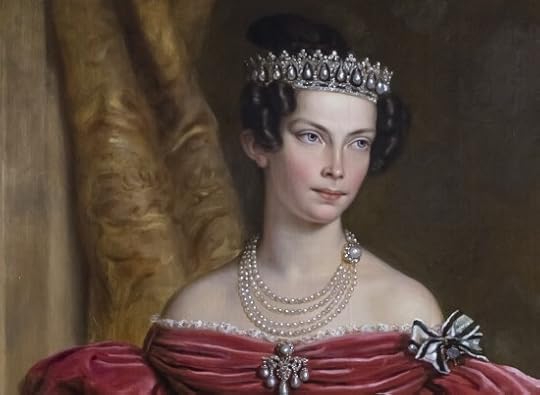 Louise of Prussia (public domain)
Louise of Prussia (public domain)The tiara was a wedding gift to Princess Louise of Prussia when she married Prince Frederick of the Netherlands in 1825. The tiara was thus likely made in Germany, and it was accompanied by a diamond brooch with five pearl pendants.
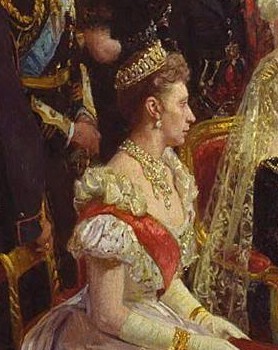 Louise of Sweden, Queen of Denmark (as Crown Princess) (public domain)
Louise of Sweden, Queen of Denmark (as Crown Princess) (public domain)Princess Louise’s namesake daughter, Princess Louise of the Netherlands, married the future King Charles XV & IV of Sweden and Norway in 1850, and she inherited her mother’s tiara in 1870. She never got to wear it, as she died shortly thereafter. The tiara was left to her only surviving child, yet another Louise. This Louise married the future King Frederick VIII of Denmark in 1869.
Embed from Getty ImagesEmbed from Getty ImagesSince then, the tiara has remained in Denmark as the last Louise placed in the Danish Royal Property Trust. The Pearl Poiré tiara is generally only worn by the Queen of Denmark.1
Embed from Getty ImagesThe post The Pearl Poiré Tiara appeared first on History of Royal Women.
April 9, 2025
Taking a look at Princess Ariane
Princess Ariane of the Netherlands was born on 10 April 2007 as the youngest daughter of the future King Willem-Alexander and Queen Máxima.
Embed from Getty ImagesA few days later, her father registered her birth with the name Ariane Wilhelmina Máxima Ines. At the time of her birth, she was fourth in the line of succession to the Dutch throne behind her father and two elder sisters, Amalia and Alexia. She became third in the line of succession when her father became King in 2013.
Embed from Getty ImagesEmbed from Getty ImagesEmbed from Getty ImagesShe was baptised in the Kloosterkerk in The Hague on 29 October 2007 by Vicar Deodaat van der Boon. She wore Princess (later Queen) Wilhelmina’s christening gown. Her godparents were Hereditary Grand Duke Guillaume of Luxembourg, Baron Tijo Collot d’Escury, Antoine Frilling, Valerie Delger and Inés Zorreguieta.
Embed from Getty ImagesEmbed from Getty ImagesPrincess Ariane attended the Christelijk Gymnasium Sorghvliet in The Hague before moving to the UWC Adriatic in Italy in 2023.
Embed from Getty ImagesEmbed from Getty ImagesEmbed from Getty ImagesHer youth has been spent in relative privacy, and she usually only made appearances on King’s Day and the bi-annual photo calls. As she is now an adult, we can expect to see her at more events, such as the Opening of Parliament (Prinsjesdag).
Embed from Getty ImagesThe post Taking a look at Princess Ariane appeared first on History of Royal Women.
April 8, 2025
Taking a look at Princess Tomohito of Mikasa as she celebrates her 70th birthday
Princess Tomohito of Mikasa was born Nobuko Asō on 9 April 1955 as the daughter of Takakichi Asō and Kazuko Yoshida. She was their third daughter daughter and youngest child. She was born into a Catholic family, and she was baptised.
Nobuko went to school in England and graduated from Rosslyn House College in 1973. When she returned to Japan, she taught England at Shoto Kindergarten in Tokyo. She met her future husband during her studies in England. Prince Tomohito of Mikasa was a student at Oxford University. He was the eldest son of Takahito, Prince Mikasa and Yuriko, Princess Mikasa, and thus a first cousin of Emperor Akihito.
Their engagement was announced on 18 April 1980, and the engagement ceremony was held on 21 May 1980. Their wedding took place on 7 November 1980, and from then on, she was known as Princess Tomohito of Mikasa. Her personal emblem is the flower of peach.
Embed from Getty ImagesThe couple went on to have two daughters together, Princess Akiko (born 1981) and Princess Yōko (born 1983). They lived together within the Akasaka Estate complex in Tokyo until 2009. She and her husband represented the Emperor of Japan on various occasions in Japan and abroad. Noboku holds various positions in welfare charities. She also enjoys cooking and has published two cookbooks.
Embed from Getty ImagesEmbed from Getty ImagesNobuko had a brain ischemia in May 2004, and she recuperated away in a villa belonging to the Sōma family. She had additional medical issues from menopause and asthma, after which she separated her household from that of her husband and children. She lived in the official residence of the Commissioner of the Imperial Household Agency.
Embed from Getty ImagesHer husband had his fair share of health issues as well. He was diagnosed with cancer in 1991 but went into remission. He was diagnosed with cancer of the larynx in 2003, and he fractured his jaw, which had been weakened by the chemotherapy, in 2006. In 2007, he announced he had alcohol use disorder and was going to undergo treatment. His cancer continued to spread, and he was diagnosed with pneumonia after being unable to swallow food properly. After his bout of pneumonia, he was only able to speak with the help of a mechanical larynx. He was eventually hospitalised, and he died of organ failure on 6 June 2012. His mother and daughters were at his bedside, but Nobuko was not. Princess Akiko acted as chief mourner at her father’s funeral. There were reportedly some family issues that kept Nobuko from her husband’s sickbed.
Princess Akiko wrote an article in the Huffington Post in which she touched on a “long-standing feud between my father and mother.” She also wrote, “Since my mother left the Prince Tomohito household to recuperate from her illness, I have not been able to speak to her properly for over 10 years. I have repeatedly expressed my desire to speak to her, but each time I have received a refusal through my representative.”1
Embed from Getty ImagesNobuko returned to public duties in 2013, but she still had to deal with several health issues. She fractured a vertebra in 2019. In 2022, she was diagnosed with stage one breast cancer. She had surgery to remove the tumour, and she underwent radiation therapy. In 2024, she underwent surgery for primary angle closure and cataracts.
Embed from Getty ImagesThe post Taking a look at Princess Tomohito of Mikasa as she celebrates her 70th birthday appeared first on History of Royal Women.
April 6, 2025
Grand Princess Liu Yuan – The martyred Princess
Grand Princess Liu Yuan was the sister of Emperor Guangwu of the Eastern Han Dynasty. She was posthumously made the Grand Princess of Xinyue.[1] During a war against Emperor Wang Mang of the Xin Dynasty, Grand Princess Liu Yuan and her three daughters were in danger of being killed by her enemies. Grand Princess Liu Yuan refused to be rescued by her brother, the future Emperor Guangwu, because she did not want to abandon her daughters. This courageous and daring act has made people throughout centuries admire and honour her as a martyr.[2]
The birthdate of Grand Princess Liu Yuan is unknown.[3] She was born in Caiyang (present-day Zaoyang in Hubei Province).[4] She was the ninth descendant of Emperor Gaozu of the Western Han Dynasty.[5] Her father was Liu Qin, who was an official of Nandun County. Her mother was Fan Chong. She had three brothers. They were Liu Yan, Liu Zhong, and Liu Xiu (the future Emperor Guangwu of the Eastern Han Dynasty).[6] She also had a younger sister named Liu Boji.[7] Liu Qin died when Liu Yuan was young, and she was raised by her uncle, Liu Liang. She married Deng Chen “of Xinyue, Nanyang Commandery.”[8] She bore him one son and three daughters.[9]
In 22 C.E., Liu Yuan’s two brothers, Liu Yin and Liu Xiu, participated in a rebellion in Yuan District (modern-day Nanyang in Henan Province).[10] They took Tutangzi Village.[11] Then, Liu Xiu took over Huyang and went to Jiyang, where he met his brother-in-law, Deng Chen, and they joined forces.[12] They were defeated at the Battle of Little Chang’an.[13] Liu Xiu fled the battle.[14] Along the way, he came across his younger sister, Liu Boji.[15] He picked her up, put her on his horse, and continued to flee.[16]
Liu Xiu and Liu Boji quickly came across Liu Yuan and her three daughters. Liu Xiu told Liu Yuan to get on his horse with Liu Boji and him.[17] However, Liu Yuan refused.[18] Liu Yuan said, “You go on and leave me here, Wenshu (Liu Xiu’s courtesy name).[19] It is important that you be victorious. The enemy is not far behind. You cannot save me, and it will avail nothing if we are both killed.”[20] Liu Xiu kept insisting that Liu Yuan get on the horse, but Liu Yuan remained adamant.[21] She said, “Go, go! You want to rescue me, but I have my three daughters with me. They will be killed, and then at what point will there be for me to go on living?”[22] The enemies drew closer, and Liu Xiu knew that he had no choice but to leave her behind.[23] As soon as Liu Xiu and Liu Boji rode away, Liu Yuan and her three daughters were killed.[24]
When Liu Xiu ascended the throne as Emperor Guangwu in 25 C.E., he made his brother-in-law, Deng Chen, the Marquis of Fangzi.[25] Emperor Guangwu posthumously made Liu Yuan the “Righteous and Martyred Grand Princess of Xinyue.”[26] He built a temple to mourn her death.[27] He made her son, Deng Fan, the Marquis of Wufang and gave him the responsibility of looking after her tomb.[28] In 29 C.E., Deng Chen died. Emperor Guangwu reburied Grand Princess Liu Yuan next to her husband, Deng Chen, in Beimang.[29] He gave her a funeral that befitted her status as a princess.[30] Emperor Guangwu and Empress Yin Lihua attended her funeral.[31]
Even though Grand Princess Liu Yuan had a short and tragic life, she was shown to be very intelligent.[32] She was quick-witted and steadfast in her actions when she realized that it was futile to be rescued.[33] She also did not want to abandon her three daughters to be mercilessly killed by their enemies.[34] Historians have praised her as a role model for mothers because of her “devotion to her daughters.”[35] Thus, scholars have praised her for her “great courage, devotion, and determination.”[36] Grand Princess Liu Yuan will always be remembered in Chinese history as “a righteous martyr.”[37]
Sources:
Theobald, U. (2000). “Emperor Han Guangwudi 漢光武帝 Liu Xiu 劉秀”. ChinaKnowledge.de – An Encyclopedia on Chinese History, Literature and Art. Retrieved on October 26, 2024 from http://www.chinaknowledge.de/History/....
Wang, B. (2015). “Liu Yuan”. Biographical Dictionary of Chinese Women: Antiquity Through Sui, 1600 B.C.E. – 618 C.E.. (L. X. H. Lee, Ed.; A. D. Stefanowska, Ed.; S. Wiles, Ed.). NY: Routledge. pp. 170-171.
[1] Wang, 2015
[2] Wang, 2015
[3] Wang, 2015
[4] Theobald, 2000, “Emperor Han Guangwudi 漢光武帝 Liu Xiu 劉秀”
[5] Theobald, 2000, “Emperor Han Guangwudi 漢光武帝 Liu Xiu 劉秀”
[6] Wang, 2015
[7] Wang, 2015
[8] Wang, 2015, p. 170
[9] Wang, 2015
[10] Wang, 2015
[11] Wang, 2015
[12] Wang, 2015
[13] Wang, 2015
[14] Wang, 2015
[15] Wang, 2015
[16] Wang, 2015
[17] Wang, 2015
[18] Wang, 2015
[19] Wang, 2015, p. 170; Theobald, 2000, “Emperor Han Guangwudi 漢光武帝 Liu Xiu 劉秀” (para. 1)
[20] Wang, 2015, p. 170
[21] Wang, 2015
[22] Wang, 2015, p. 170
[23] Wang, 2015
[24] Wang, 2015
[25] Wang, 2015
[26] Wang, 2015, p. 170
[27] Wang, 2015
[28] Wang, 2015
[29] Wang, 2015
[30] Wang, 2015
[31] Wang, 2015
[32] Wang, 2015
[33] Wang, 2015
[34] Wang, 2015
[35] Wang, 2015, p. 171
[36] Wang, 2015, p. 171
[37] Wang, 2015, p. 171
The post Grand Princess Liu Yuan – The martyred Princess appeared first on History of Royal Women.
April 5, 2025
Book News Week 15
Book News Week 15 – 7 April – 13 April 2025

Warrior Queens & Quiet Revolutionaries: How Women (Also) Built the World
Paperback – 8 April 2025 (US)
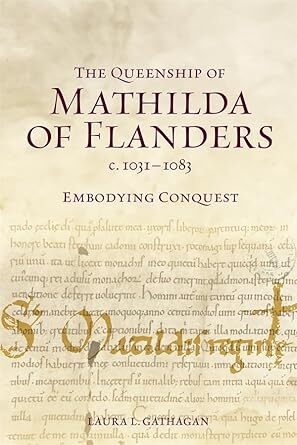
The Queenship of Mathilda of Flanders, c. 1031-1083: Embodying Conquest
Hardcover –8 April 2025 (US & UK)

The Last Dynasty: Ancient Egypt from Alexander the Great to Cleopatra
Hardcover – 8 April 2025 (US)
The post Book News Week 15 appeared first on History of Royal Women.
April 4, 2025
The Year of Queen Sālote Tupou III – Her accession
In early 1917, Princess Sālote’s father became ill, and it was clear that he was declining quickly.
Around this time, a suitor for Sālote was settled on, and he met with the approval of the Privy Council, the public and the royal family. His name was Tungī Mailefihi.
They were married on 19 September 1917. A press report stated, “The Princess, in choosing her trousseau, showed a weakness for pastel tints, especially in blues and pinks. Lace, silver, and pearls play an important part in the adornment scheme of her bridal apparel. The wedding gown has a fashionable court train, which is 5 1/2 yards long and 3 yards wide. The elaborate gown is of Brussels lace over white silk taffeta and ninon with a pointed tunic of white crêpe de Chine. Silver and pearls edge the tunic, which is caught with silver tassels. Ivory white brocaded satin has been used for the court train, which is lined with white ninon and edged with innumerable frills of malines lace and ninon, and finished at the corners with silver leaves and orange blossoms. The bodice is of rich lace and silk with a trail of orange blossoms and silver leaves on the left shoulder. The whole is stitched with silver according to the bride’s wish, and the stitchery shows a gleam of silver through the lace mesh.”1 The Tongan tu’ uvala ceremony was celebrated two days later.
The newlyweds went to Latai, where they would spend some time living. Sālote was pregnant by October, but her husband had to leave her behind to return to his duties as governor of Vava’u. Meanwhile, her father’s health steadily declined. He had been unable to attend the opening of parliament. The Chief Medical Officier of Fiji, who was sent by the High Commissioner for the Western Pacific, arrived in December 1917 and confirmed the diagnosis of tuberculosis. Clearly, the King did not have much time left, but Tongan custom prohibited this being stated publicly.
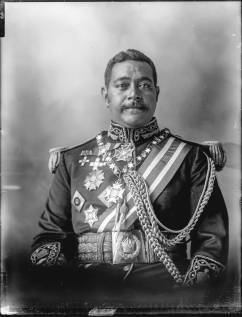 King George Tupou II – Public domain via Auckland Libraries Heritage Collections 31-WPSCH21
King George Tupou II – Public domain via Auckland Libraries Heritage Collections 31-WPSCH21Sālote travelled to visit him during the summer of 1917/1918 at his house at I on the southeastern part of the island. It was a tiring journey for the pregnant Sālote, and her worried husband wrote to her, “I am glad you are there to look after the sick man [the King]. Even though you cannot do much for him, the important thing is the comfort you give him. I am very sorry that I cannot help him, but I am reassured that you are there.2
At the end of the summer, her father returned from I to the Royal Palace. Sālote celebrated her 18th birthday on 13 March. Her father died in the early hours of 5 April 1918.
The New Zealand Herald reported, “News was received in Auckland last night to the effect that King George Tupou II of Tonga died of tuberculosis at his island home in the morning of Friday, April 5, and was buried in state the following Wednesday. The King, who was 44 years of age [sic], had been ailing for some time, and a few months ago, the government medical adviser from Fiji visited Tonga in the steam yacht Ranadi to attend him. The medical officer then stated that the disease had shown signs of development, but after treatment, he expressed the opinion that it had been arrested in time. Death, however, came suddenly, as the King was rising from bed, on April 5.”3
Sālote was now Queen. In the afternoon of the day of her father’s death, a short meeting of the Privy Council confirmed Sālote as her father’s successor and discussed the funeral details. The Privy Council met again the following morning. Sālote took her oath of office, and the ministers swore allegiance to her. That same day, her succession was proclaimed at the Mala’e Pangai, the field adjacent to the Royal Palace. Two days later, the nobles and chiefs from Ha’apai and Vava’u4 arrived to swear their allegiance. This included Sālote’s husband, Tungī.
The Royal Palace could not be used until water was sprinkled in all of the rooms. This was done on 1 May, and in the meantime, Sālote slept in the Royal Chapel on the palace grounds. Due to custom, she and her husband could not move into the palace until the mourning period was over. Some floors and walls were eventually replaced to allow Sālote to give birth at the palace before the mourning period was over.5
Following her accession, the only Tongan person she could eat with was her husband, and she returned to his house to eat and bathe.
On 10 April, the funeral took place, and Sālote joined her stepmother Takipō in the procession; both were “heavily veiled.”6 The late King was interred next to King George Tupou I, his first wife and Sālote’s mother, Lavinia, his father, Siaosi Tuʻipelehake and Sālote’s infant half-sister, Princess ʻOnelua.
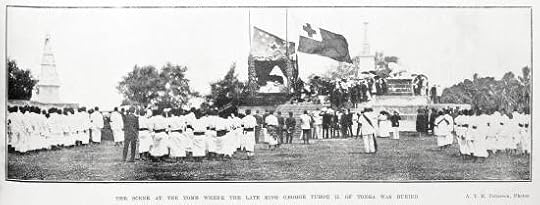 The scene at the tomb where the late King George Tupou II of Tonga was buried
The scene at the tomb where the late King George Tupou II of Tonga was buried– Auckland Libraries Heritage Collections AWNS-19180509-31-03 (public domain)
Sālote declared that there was to be a six-month period of mourning, which was significantly longer than usual. The coronation would take place after this mourning period, but Sālote immediately took up the royal duties required of her. Sālote later lamented, “I didn’t know the first thing about government.”7
The post The Year of Queen Sālote Tupou III – Her accession appeared first on History of Royal Women.
April 3, 2025
Royal Wedding Recollections: Amalia of Solms-Braunfels & Frederick Henry, future Prince of Orange
The wedding ceremony that took place on 4 April 1625 was quite austere as the groom’s brother lay dying. Nevertheless, he had made his brother promise to marry.
The bride and groom were Amalia of Solms-Braunfels and Frederick Henry, soon-to-be Prince of Orange. His brother Maurice had regretted not marrying and fathering heirs himself, and as he took to his bed, he summoned his brother to him and told him to marry sooner rather than later.
Amalia of Solms-Braunfels was a noblewoman who had served at the court of Elizabeth Stuart, the exiled Queen of Bohemia, in The Hague. She and Frederick Henry were cousins as her grandmother, Elisabeth, was a sister of Frederick Henry’s father. She had been his lover for a while, and as there was no more time for an extensive search for a more elusive bride, he settled on Amalia. The Venetian ambassador wrote, “She possesses nothing more than her rich beauty.”1
Frederick Henry took his brother’s advice, and on 29 March, he announced to the States General that he was to be married. They responded by sending Amalia a wedding gift of F20,000, and the civil wedding took place on 2 April, with the religious ceremony to follow two days later. This would happen without the necessary dispensation of the calling of the wedding bans on three subsequent Sundays due to Maurice’s impending death.2 This was eventually granted by the States General.3
 Photo by Moniek Bloks
Photo by Moniek BloksThe wedding took place in the Kloosterkerk in The Hague. On the morning of the wedding, the Queen of Bohemia told her former lady-in-waiting, “My unhappiness is your happiness, Madame!”4 Elizabeth later wrote, “I ame sure you heere alreadie of this Prince of Orenfes marriage with one of my woemen, she is a Countesse of Solms daughter to Count Solmes that [sic] serued the King of Bohemia at Heidleberg, I dout not but you remember him by his red face and her mother by her fatness, she you neuer saw but two of her sisters she is verie handsome and good.”5
Just eight days after the wedding, Frederick Henry was forced to leave his new wife behind to rejoin the army. Maurice would die on 23 April.
Amalia soon fulfilled her primary duty, and she gave birth to a son, the future William II, Prince of Orange, on 27 May 1626.
The post Royal Wedding Recollections: Amalia of Solms-Braunfels & Frederick Henry, future Prince of Orange appeared first on History of Royal Women.
April 1, 2025
Taking a look at Princess Sirindhorn as she celebrates her 70th birthday
Princess Sirindhorn of Thailand was born on 2 April 1955 as the second daughter of King Bhumibol Adulyadej and Queen Sirikit. Her elder sister, Princess Ubolratana, was born in 1951. Her elder brother, now King Vajiralongkorn, was born in 1952. She also has a younger sister, Princess Chulabhorn, who was born in 1957.
Embed from Getty ImagesThe New York Times reported, “Queen Sirikit of Thailand gave birth to a daughter tonight. She and King Phumiphol Aduldet (sic) have another daughter, Princess Ubolraj (sic), 4 years old, and one son, 2-year-old Crown Prince Vajiralongkorn.”1 She was born at the Amphorn Sathan Residential Hall, Dusit Palace. In 1974, the constitution was amended to allow for the appointment of a woman as successor to the throne.
Embed from Getty ImagesSirindhorn attended The Chitralada School, which is an exclusive school for the royal family and palace staff. In 1975, she enrolled at Chulalongkorn University and graduated with a Bachelor of Arts. She later obtained a Master of Arts in Oriental Epigraphy and a Master of Arts in Pali and Sanskrit. She was awarded a PhD in developmental education in 1987 after enrolling in a program at Srinakharinwirot University.
Embed from Getty ImagesEmbed from Getty ImagesIn 1981, she attended the wedding of the Prince of Wales and Lady Diana Spencer. She would also attend the wedding of Prince William and Catherine Middleton many years later. Princess Sirindhorn herself has never married, and she does not have any children. She speaks several languages, such as English, French and Chinese and she performs royal duties on behalf of her brother.
Embed from Getty ImagesEmbed from Getty ImagesEmbed from Getty ImagesShe is considered to be more popular with the public than her brother.
The post Taking a look at Princess Sirindhorn as she celebrates her 70th birthday appeared first on History of Royal Women.



